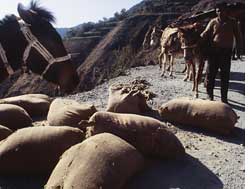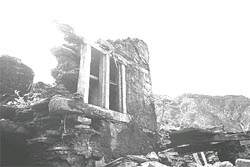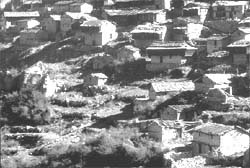Geothermal systems in the Northwest Himalaya
Conventional energy resources are fast depleting and therefore alternative resources are required to sustain the fast progress and development of any nation. This situation is more pertinent to India
Conventional energy resources are fast depleting and therefore alternative resources are required to sustain the fast progress and development of any nation. This situation is more pertinent to India

Pack animals help reduce carbon dioxide pack animals, including horses and mules, are known to transport pilgrims and goods. Now, these animals serve another important purpose, a study has shown. They help reduce CO2 emissions. This, researchers concluded after studying six major valleys
The present study was undertaken in the six major valleys of Garhwal Himalaya, Uttarakhand to understand and quantify the contribution of pack animals in reducing CO2 emission in Indian Central Himalaya. The study has demonstrated that horses and mules provide direct and indirect services to the society and country. The direct services include communication services in far-flung and remote areas not connected with the road network, where they transport essential

This article employs multiple methods to uncover how competing conceptions of nature, manifest through discourses of nature, influence ideas of how the reserve should be managed.
The term bioprospecting has been widely used to assess the economic potential of different plant species and their value-addition. Our folklore with embedded cultural heritage has tremendous possibilities and potential for bioprospecting. Among the over 8000 species of flowering plants growing in the Himalaya, nearly 4000 are identified from the Garhwal Himalayan region. This part of region enjoyed a significant place throughout its history.
This communication is the first attempt at contributing to monitoring and systematic gathering of information on the heavy metal profile of the environment, i.e. retrospective study of the environmental metal data (Pb, Fe, Zn, Cd and Ni) of the past 100 years, i.e. 1895
Water is the most important natural resource which forms the core of the ecological system. The advent of remote sensing has opened up new vistas in groundwater prospect evaluation, exploration and management. The groundwater resources of the study area, Rishikesh region of Garhwal Himalayas, are under threat due to population pressure caused by expanding tourism in this region.
In traditional water management, innovative arrangements ensure equitable distribution of water. Such arrangements are democratically implemented: the gram sabhas or farmer committees usually approve
MUNGLI DEVI Bhansiya Chana, Almora district The six villages of Bhansiya Chana gram sabha in Shereghat, Almora district, Uttaranchal, share the water of river Jaiganga, a tributary of river Saryu.

How landslides of the 1998 kind in Garhwal can be prevented

In 1962, it was the Indo Chinese war. Now it is the creation of the Nanda Devi Biosphere Reserve. Once again, the Bhotiyas, who inhabit the Garhwal hills, find themselves at crossroads. They find their means of sustenance cut off. The difference this tim